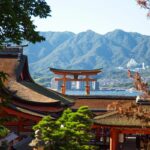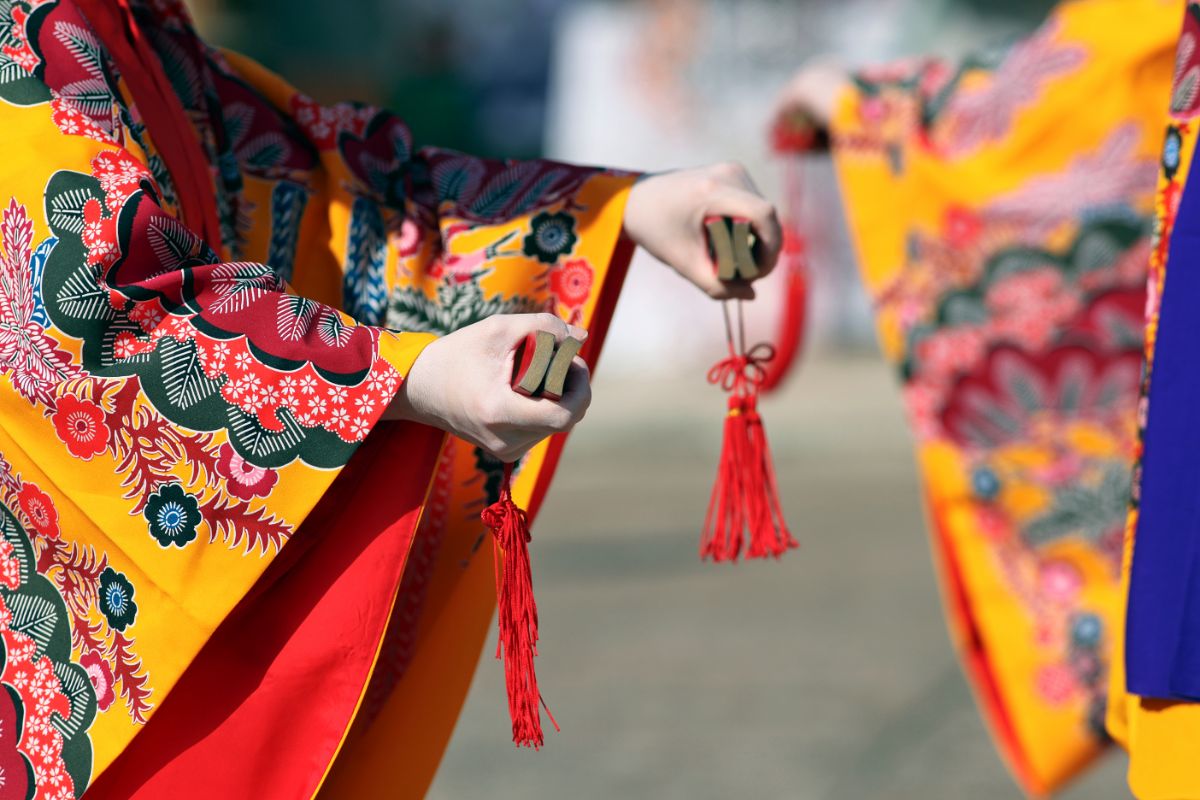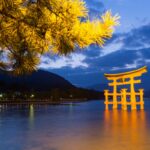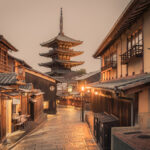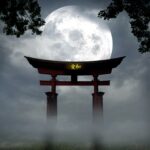Whether you’re planning a visit to the country or you’re simply curious about cultural traditions, Japan’s religious practices are interesting to learn about. While the country is “famous” for being generally non-religious, the Japanese people are a spiritual people, with most of the population practicing some form of faith or belief.
Spiritual beliefs are some of the most deep-rooted in any culture, and the Japanese are no exception. While it’s less overt than other faiths or the practices of some religious cultures, there’s a strong current of spirituality that underpins many of the customs, habits, values, morals and behaviors of Japanese citizens.
if you’re interested in learning more about the religious and spiritual pillars of Japanese culture, read on. You’ll discover Japan’s unique religious past and present, which can help you understand the culture on a deeper level and behave more confidently as a guest in the country.
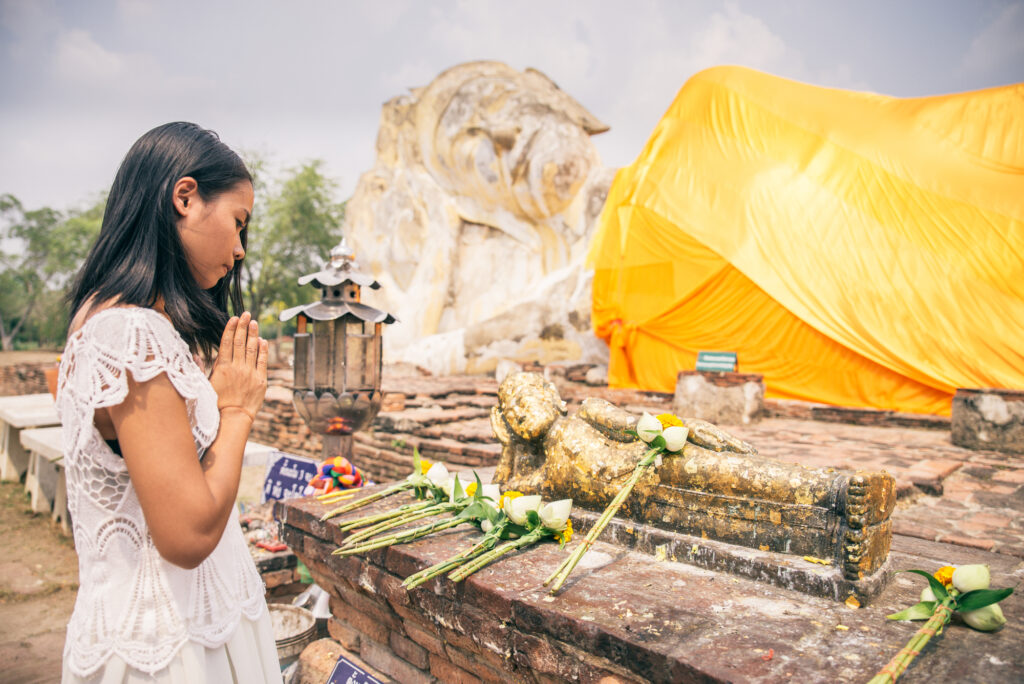
Spirituality vs. religion: an important distinction
Most people in Japan aren’t religious, but they do follow some spiritual traditions. This distinction is important, as religion refers to the follow of a specific faith or worship, while spirituality is more of an individual practice—an inward journey involving a shift in awareness, rather than taking part in external activities.
In short, most Japanese people hold and practice spiritual beliefs, but don’t follow a single religion. This has led to overlap in many religions and spiritual practices, which can be unique down to the person. To call the Japanese religious wouldn’t be accurate, and it doesn’t do justice to the mixture of spiritual beliefs that each individual person may hold true to themselves.
Much of Japan is atheistic
At various points of Japanese history, religion played a prominent role in everyday public life. Both Shinto and Buddhism were seen as state religions at certain times, with secularism becoming more prominent in Japanese society since the Constitution of Japan was prepared in 1947.
Japan’s secular nature can be seen in its demographics of religious affiliation, with more than 60% of the population stating they don’t follow a particular religion or faith. This is to say that the Japanese are complex when it comes to describing belief in a higher power. Japan is sometimes called the “most religious atheist country” or referred to as a country of personal religion. In either case, it means the same thing: religion and spirituality are in the eye of the beholder. There is no right or wrong answer in Japan.
Shinto and Buddhism are the primary faiths
Shinto and Buddhism are the main religions in Japan. While many Japanese people don’t personally profess a belief in these faiths, they still follow their individual sets of practices.
According to the Japanese government, 69% of the population practices Shinto, while 66.7% practice Buddhism. There’s clear overlap. This is evident at many shrines throughout the country, where believers of both religions come together to profess similar thanks and appeals for guidance.
The government data reflects the general view of both Shinto and Buddhism as a set of practices or way of life, rather than a religion. Many Japanese people practice these faiths in conjunction with other beliefs. Generally, though, the Japanese don’t hold or express intense religious feelings in their day-to-day life, with very few exceptions.
What is Shinto?
Shinto, or “the way of the gods,” is a faith as old as Japan itself. It’s an indigenous set of beliefs with no founder and no sacred scripts like the Bible or Torah. Because the belief system is so deeply ingrained in Japanese culture, people and traditions, it’s seen as more of a lifestyle than a religion. Preaching or teaching is uncommon.
Shinto gods are called kami—the sacred spirits that take the form of important things and concepts. From mountains to trees, fertility to weather, kami are everywhere. Humans become kami after death, often referred to as “ancestral kami.” Extraordinary people even become kami that are housed in local shrines for remembrance.
Shinto is fundamentally a positive faith, viewing humans as inherently good, and evil is seen as the work of evil spirits. You’ll find many Shinto shrines across Japan dedicated to specific kami, each featuring unique shrine architecture and art like calligraphy. In this way, Shinto has many parallels to Taoism—once again, another point of overlap for many Japanese people.
Most shrines celebrate matsuri, or festivals, designed to show the kami the outside world. Matsuri are often celebrated by the Japanese people and visitors alike—they’re some of the most vibrant, festive events on the Japanese calendar. These events are public, which is a wonderful way for visitors to learn more about not only the kami being celebrated, but Shinto as a whole.
What is Buddhism?
The ancient Indian faith of Buddhism originated in the 6th Century B.C. Consisting of the teachings of the Buddha, Guatama Siddhartha, the religion has adherents around the world. And while most of us might associate the image of a laughing buddha with this religion, there’s far more than this religion than great-bellied statues.
In Japan, the Mahayana or “Greater Vehicle Buddhism” is the primary branch of Buddhism in the country. Imported to Japan via China and Korea in the 6th Century, Buddhism was initially welcomed by ruling nobles as the country’s state religion. Its complex theories made the religion inaccessible to the common people, but the religion soon spread in the Nara period. While the religion initially conflicted with Shinto—the indigenous religion of Japan—the two faiths adapted to co-exist and complement each other.
Today, most Japanese Buddhists follow the teachings of the Jodo-Shin sect, which simplified Buddhist teachings. The Zen sect, introduced from China in 1191, included complicated theories focused on self-enlightenment. Today, two-thirds of Japanese people consider themselves Buddhists, but their faith doesn’t impact their everyday life. While funerals are often performed in the Buddhist tradition, and many homes have Buddhist shrines to honor ancestors, very few people participate in Buddhist practices in their day-to-day lives.
You’ll find many Buddhist temples, or tera, throughout Japan—nearly every town has at least one. Often, there are several buildings surrounding the temple that serve specific functions, like lecture halls, cemeteries and more. You can visit temples for cultural or religious festivities—they’re among some of the most impressive sites you’ll discover on your travels to Japan.
Spirituality is personal in Japan
The Japanese people take spirituality personally, following their individual beliefs as more of a way of life than a religion. In Japan, it’s common to find families and individuals practicing a variety of faiths, particularly Shinto and Buddhism, with some even incorporating aspects of other Asian faiths like Confucianism and Daoism.
You can see this unique blend of religious practice, called syncretism, in Japanese rituals relating to birth and death. Often, the Japanese commemorate growth with Shinto practices, while rituals for the deceased may follow Buddhist traditions.
In something of a rarity, spiritual differences in Japan are often met with welcomeness. For example, a person may not celebrate a certain death ritual; however, in celebrating the life of a recently departed friend, they’re likely to participate in the ceremony or ritual according to that person’s beliefs (or that of their survivors). There’s a healthy respect for personal belief that extends across the Japanese people. They’re tolerant by nature.
Japanese culture is tolerable of all religions
While most Japanese people don’t consider themselves “religious,” Japan has a reputation for being a very tolerant nation. In fact, the country’s constitution guarantees freedom of religion. While Japan is undoubtedly a secular society, people of all faiths can feel welcome in the country.
That said, there’s a notable absence of European and Western faiths in Japan. Christianity, for example, represents less than 2% of the national religious census. There are many explanations for the lack of diversity, but the simplest has to do with cultural mores. Much of Japanese society is rooted in personal belief and discovery of self, whereas Western religions often involve group participation and preaching to a “flock.”
If you’re adventuring to Japan and bringing your religion with you as part of your everyday life, expect to be welcomed as you are. Keep in mind, however, that it’s considered unsavory to be vocal about your beliefs or to push them on others in social situations. In Japan, religion and spirituality are personal, and should stay that way.
Spirituality is at the root of Japanese culture
No matter what religion you follow—or if you follow none at all—you can feel free to express yourself and follow your individual beliefs in Japan. Moreover, exploring the practices and celebrations associated with Shinto and Buddhism can be an enlightening experience for those seeking to learn more about Japanese culture.
If you’re looking to form a deeper connection with the Japanese people and their way of life, consider visiting a shrine or attending a spiritual celebration. It’s not only a wonderful way to immerse yourself in Japanese culture, it’s also a gateway into understanding how the Japanese people think about life and the world around them.
- How Much Money Can You Make Teaching English in Japan? - December 12, 2022
- The Best Places to Teach English in Japan - December 9, 2022
- The Best Credentials for Teaching English in Japan - December 8, 2022


